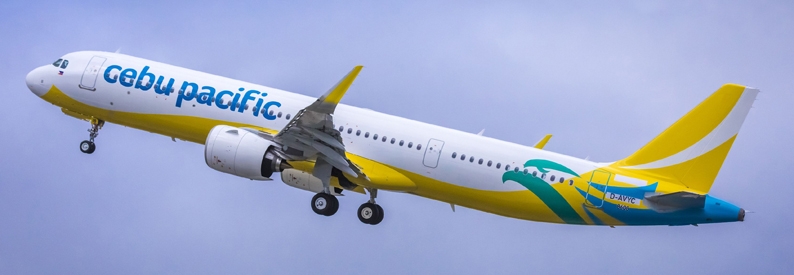Cebu Pacific Air (5J, Manila Ninoy Aquino International) is not planning to retire any of the 73 aircraft operated by the mainline or its regional subsidiary Cebgo, is mum on its delivery plans for the more than 50 aircraft it has on order.
"(There are) no retrenchment plans for Cebu Pacific... The 73 aircraft are for the full recovery of our network, and we do want to go back to pre-Covid levels as soon as possible," Vice-President (Marketing, Customer Experience) Candice Iyog said during a virtual press briefing to local media.
She admitted that about half of Cebu's aircraft were currently in long-term storage but underlined that the carrier plans to reactivate all of them as soon as demand recovers. This positions the LCC in stark contrast to flag carrier Philippine Airlines (PR, Manila Ninoy Aquino International), which recently initiated Chapter 11 bankruptcy proceedings and plans to trim its fleet by as much as 25%.
According to the ch-aviation fleets module, Cebu Pacific currently operates twenty-three A320-200s, five A320-200Ns, seven A321-200s, nine A321-200NXs, and seven A330-300s, while Cebgo operates a further six ATR72-500s, two ATR72-500(F)s, and thirteen ATR72-600s.
However, Iyog would not disclose any details concerning Cebu's plan for future deliveries. The airline has sixteen A320-200Ns, twelve A321-200NXs, ten A321-200NY(XLR)s, sixteen A330-900s, and three ATR72-600s on firm order from Airbus and ATR - Avions de Transport Régional. Iyog said discussions with Airbus over its timing were still ongoing.
While the LCC has underpinned its recovery plan primarily on the rapid return of domestic tourism in the Philippines, Iyog has highlighted that the gradual resumption in international services would also contribute to the growing number of active aircraft. Cebu Pacific plans to begin flying to Dubai International on September 30, Nagoya Chubu on October 2, Osaka Kansai and Kuala Lumpur International on October 4, and Fukuoka on November 5, despite the prevailing travel restrictions banning most international travellers from entering the Philippines. The carrier also continues to participate in government-mandated repatriation operations.
While Cebu is not planning any further cuts, the carrier trimmed its workforce by a quarter 25% during the early stages of the COVID-19 pandemic. It has also actively raised fresh capital from financial markets during 2020 and 2021.







